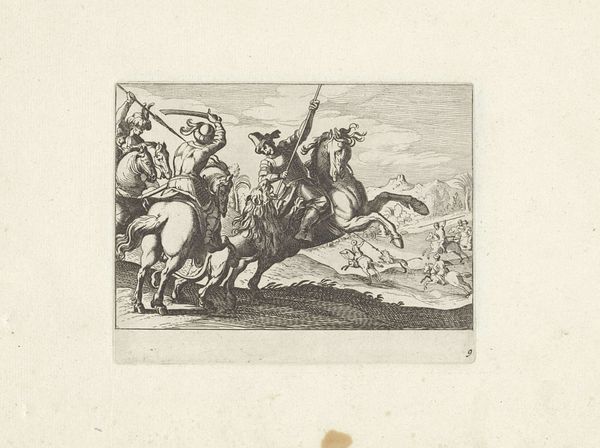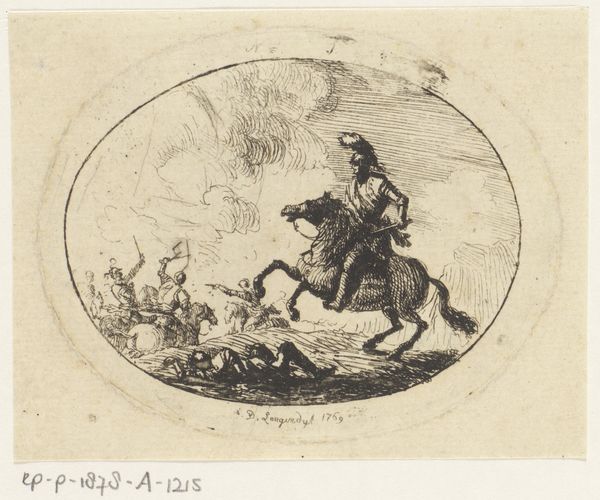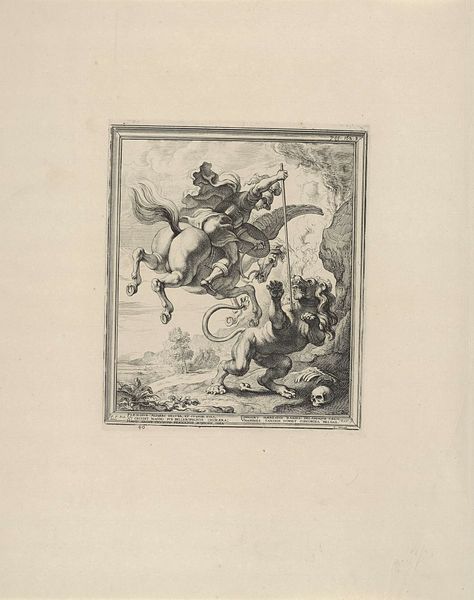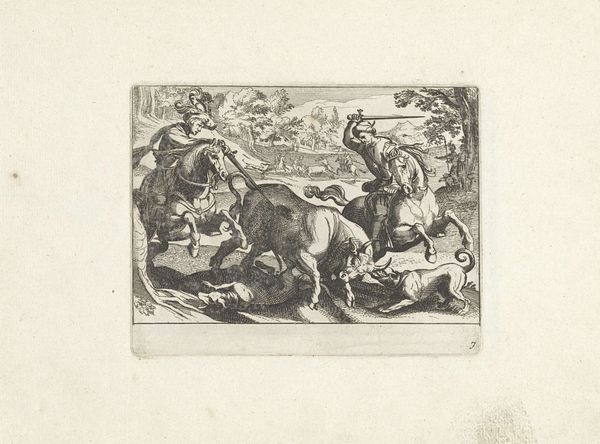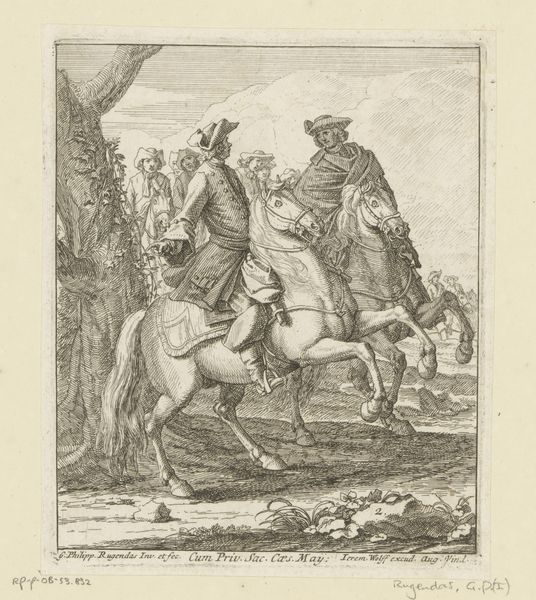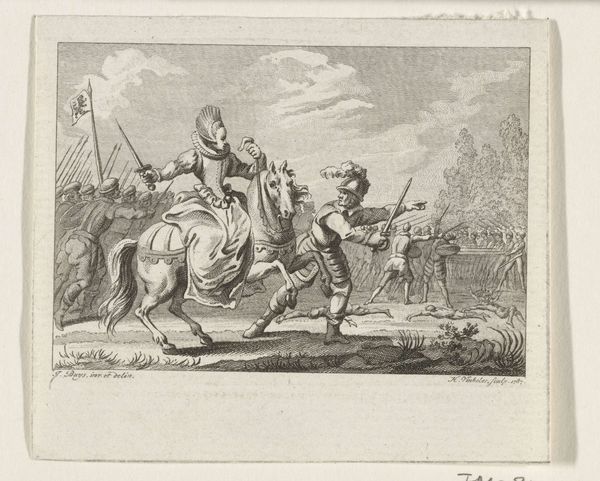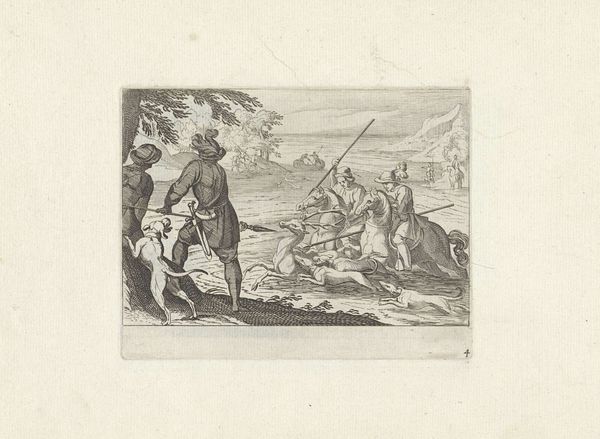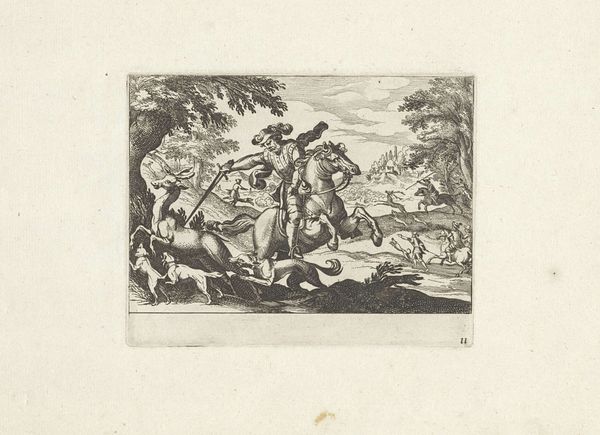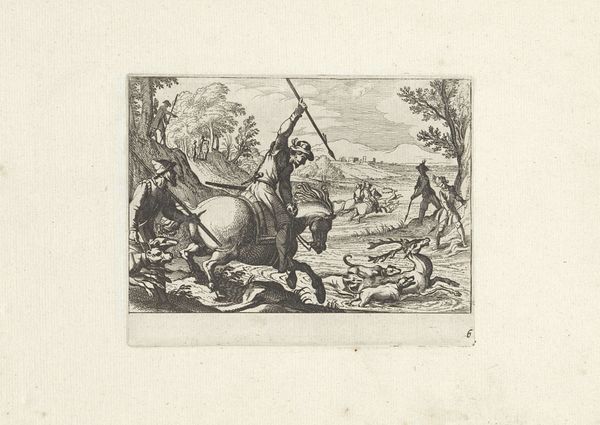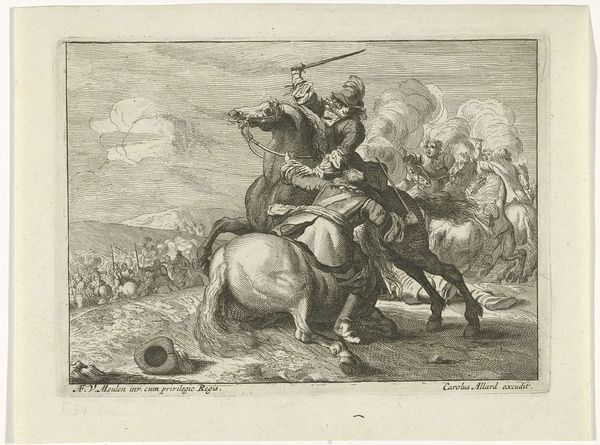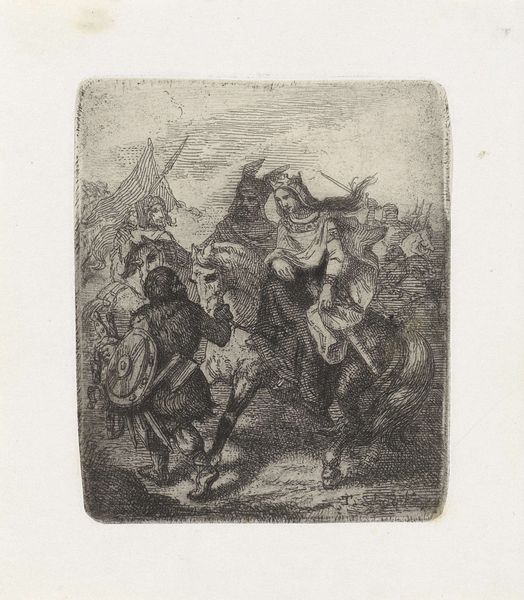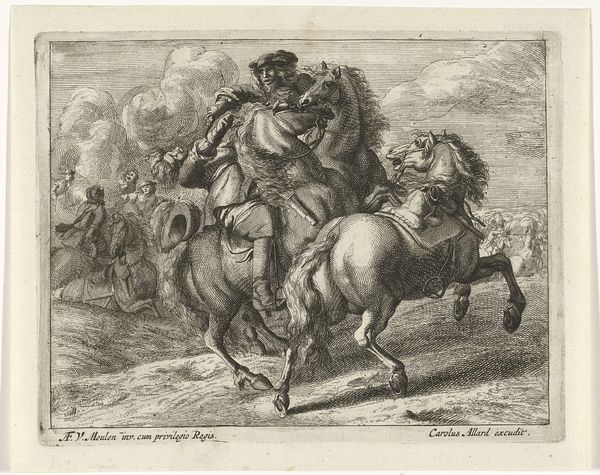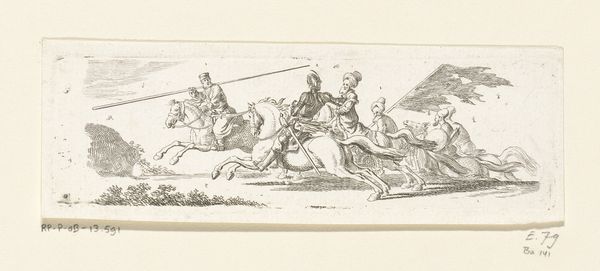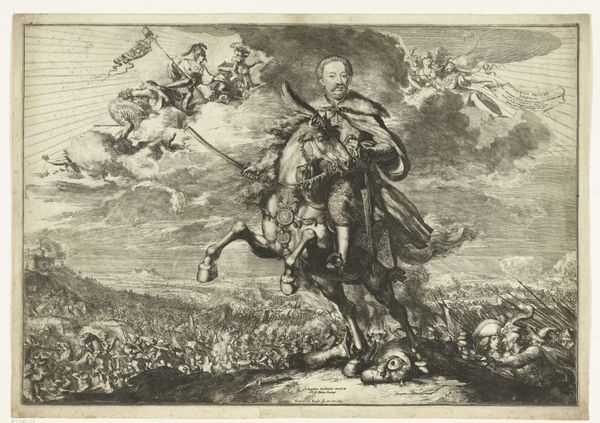
print, metal, engraving
#
allegory
# print
#
metal
#
pen sketch
#
pencil sketch
#
old engraving style
#
mannerism
#
figuration
#
ink drawing experimentation
#
line
#
pen work
#
history-painting
#
engraving
Dimensions: height 131 mm, width 100 mm
Copyright: Rijks Museum: Open Domain
Editor: Philips Galle’s engraving, "Jupiter doet Phaëthon neerstorten," created sometime between 1542 and 1602. What strikes me most is the chaotic energy and how it fills the oval frame. What story do you see unfolding here? Curator: It depicts the classical myth of Phaëthon, son of Helios, who attempts to drive the sun chariot but loses control, threatening to scorch the earth. Jupiter intervenes, striking Phaëthon down with a thunderbolt. The visual chaos you mention mirrors the social anxieties of the period. This engraving, produced in the Mannerist style, uses exaggerated forms and dynamic compositions. How does this fit into what you know of Mannerist art's purpose? Editor: I know Mannerism broke away from the Renaissance ideals, favouring complexity over harmony, a sense of crisis perhaps? This piece definitely communicates crisis through the swirling horses and Phaëthon's dramatic fall. Curator: Precisely. Consider the role of printmaking at the time. Prints circulated widely, disseminating classical narratives but also specific political or religious ideologies. This image, made for a broad audience, presents a cautionary tale of hubris and divine authority. Editor: So it's not just the story, but the accessibility of the print itself that is politically significant? Curator: Absolutely. Furthermore, consider Galle's role as a printmaker. He disseminated the designs of other artists like Maerten de Vos – whose design this is "naar" or "after" - reaching an even wider audience. Think about how this relates to copyright and artistic reputation. Editor: It's fascinating how a seemingly simple print can reveal so much about the artistic and social landscape of its time! Curator: Indeed. Reflecting on the layers of production, dissemination, and socio-political context, we can see that this image operates beyond its immediate narrative.
Comments
No comments
Be the first to comment and join the conversation on the ultimate creative platform.
